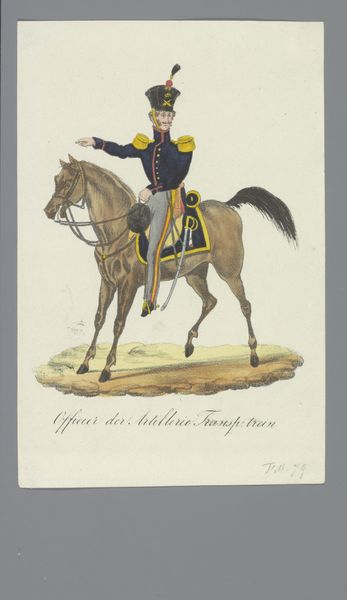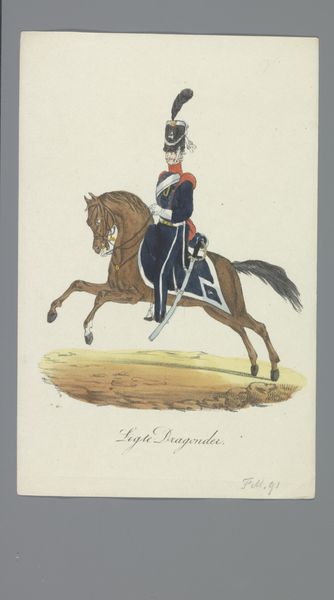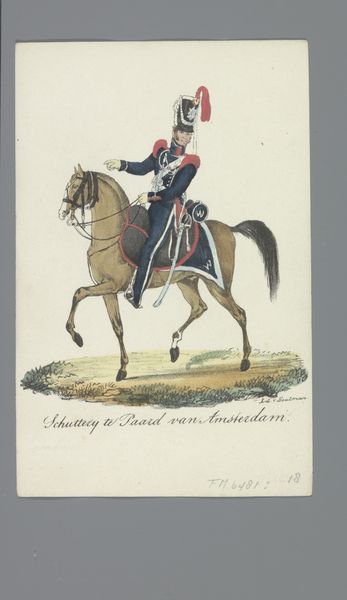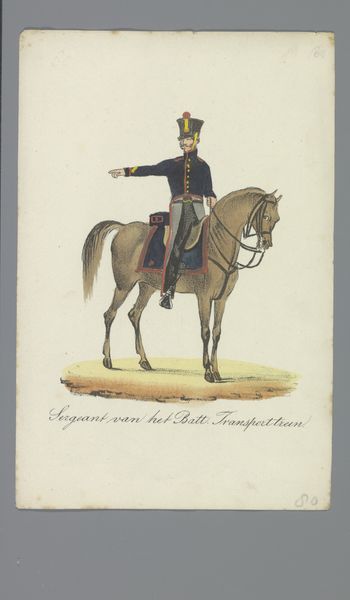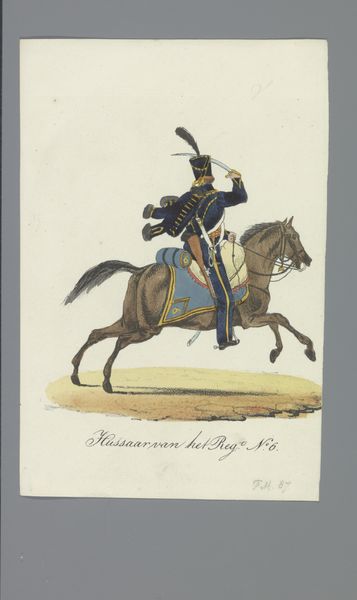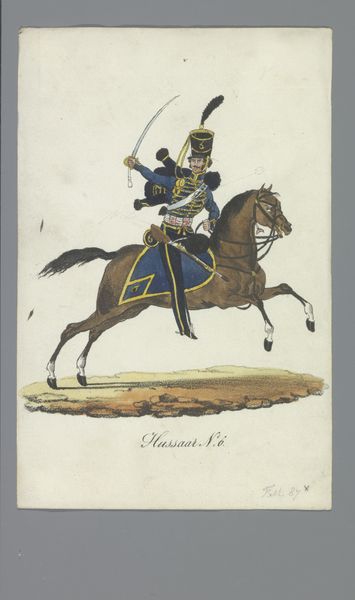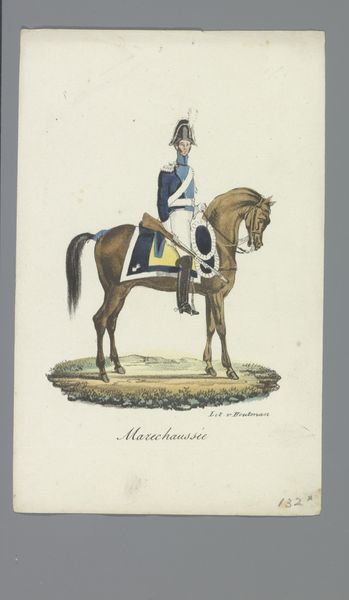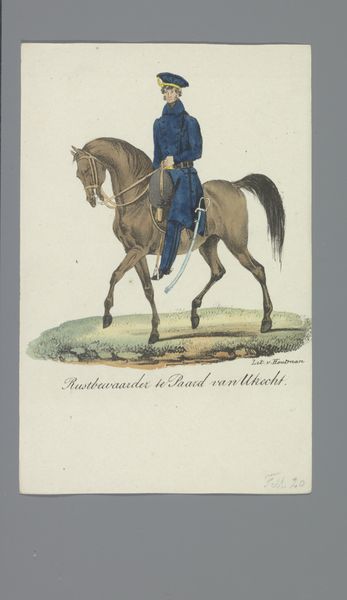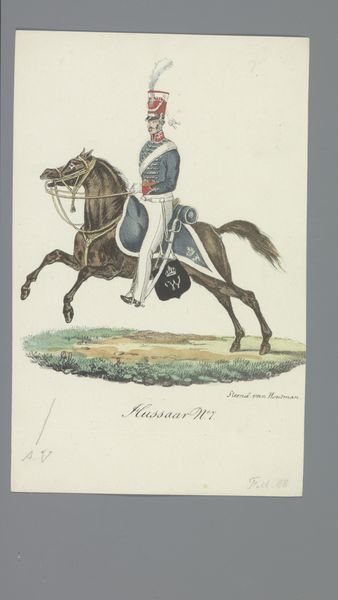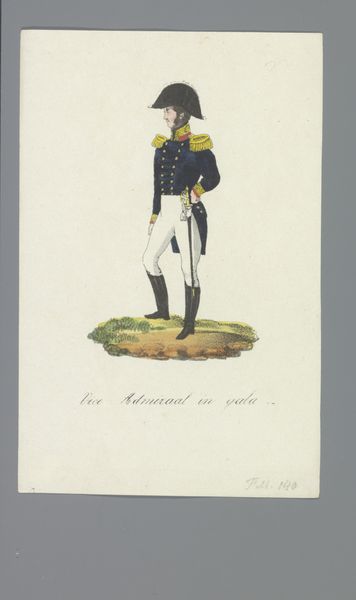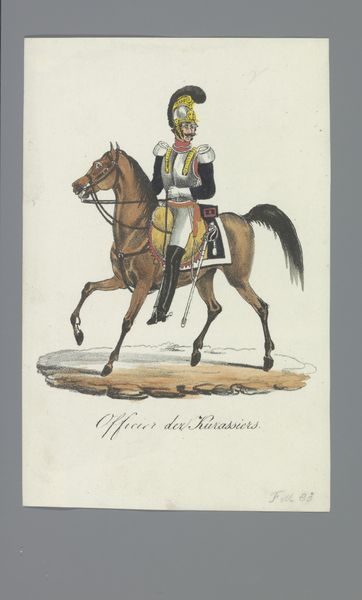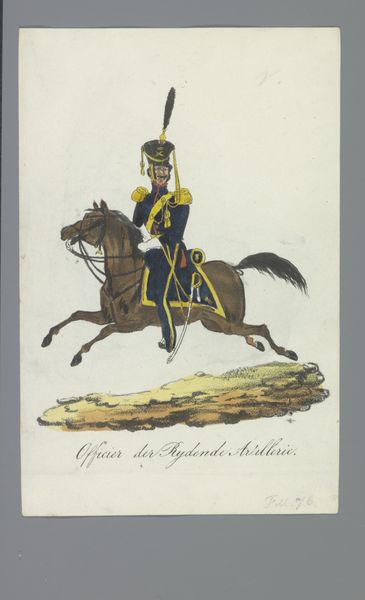
painting, watercolor
#
portrait
#
painting
#
watercolor
#
romanticism
#
genre-painting
#
miniature
Dimensions: height 170 mm, width 110 mm
Copyright: Rijks Museum: Open Domain
Curator: I’m just struck by the dynamism. Even in this relatively small watercolor by Albertus Verhoesen titled "Luitenant Generaal," painted sometime between 1835 and 1850, there's this surprising energy. Editor: He definitely exudes a kind of military prowess, doesn’t he? Though, what does it mean to portray that now, knowing the human cost often glossed over in these heroic depictions of military figures? Curator: Absolutely, there’s a tension there. It's a romantic portrayal, undoubtedly, the officer depicted as noble, almost a balletic figure, balanced so perfectly. It’s this glorification of a very specific kind of masculinity. Editor: Exactly! It’s interesting that it comes in miniature and watercolor—such an intimate rendering, as if military power can be absorbed into these docile techniques. Who do we expect to have this image in their possession and how do they imagine the lieutenant general here? Curator: That’s an astute point. Its preciousness makes me think this was made for a private collection, perhaps a familial commemoration rather than outright propaganda. Notice also, it's not just a portrait of the man, but of the horse as well; the posture mimics each other. Editor: Both literally positioned as tools, or appendages, of colonial power and militarization. But the horse still communicates a certain vulnerability. His stance, like that of a marionette held aloft, undermines notions of autonomy, or choice. Curator: And how striking to find this at the Rijksmuseum in Amsterdam, right? Makes you think of all of the dynamics of trade and colonialism embodied in this figure—it makes one want to ask even more questions! Editor: Right, placing this artwork within a larger history and context makes all the difference, to have us, hopefully, question what and whom these grand narratives exclude. Curator: In the end, Verhoesen’s technical prowess meets broader historical and political forces head-on—leaving me with a deep curiosity about where power truly resides, and for whom, in these portrayals. Editor: Right. And in whose hands the brush really rested, then and now, when shaping this story for public view.
Comments
No comments
Be the first to comment and join the conversation on the ultimate creative platform.
